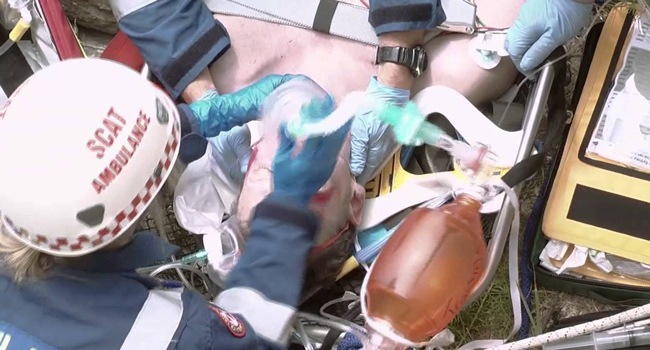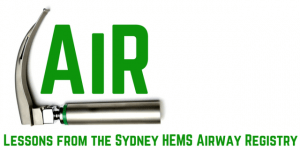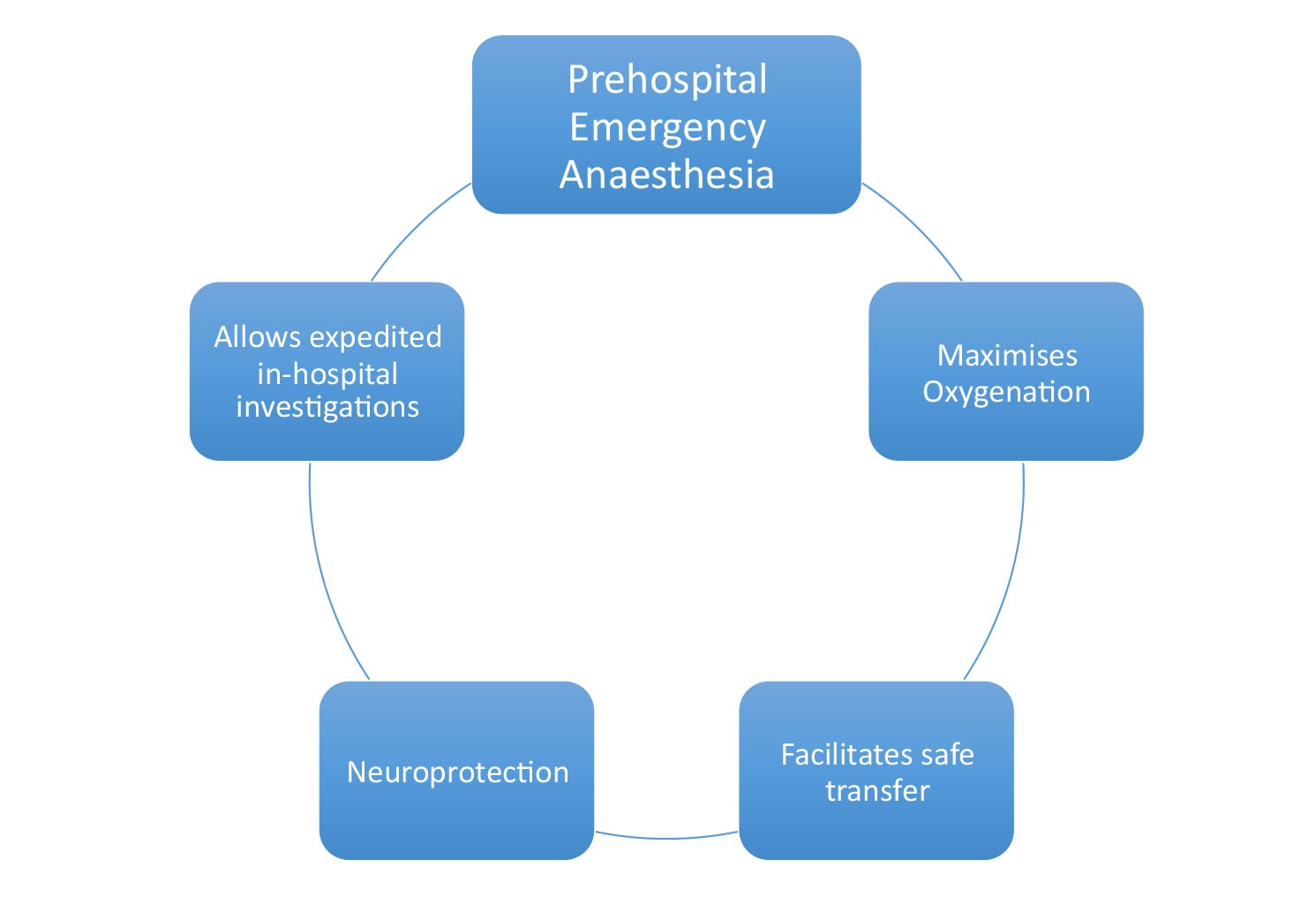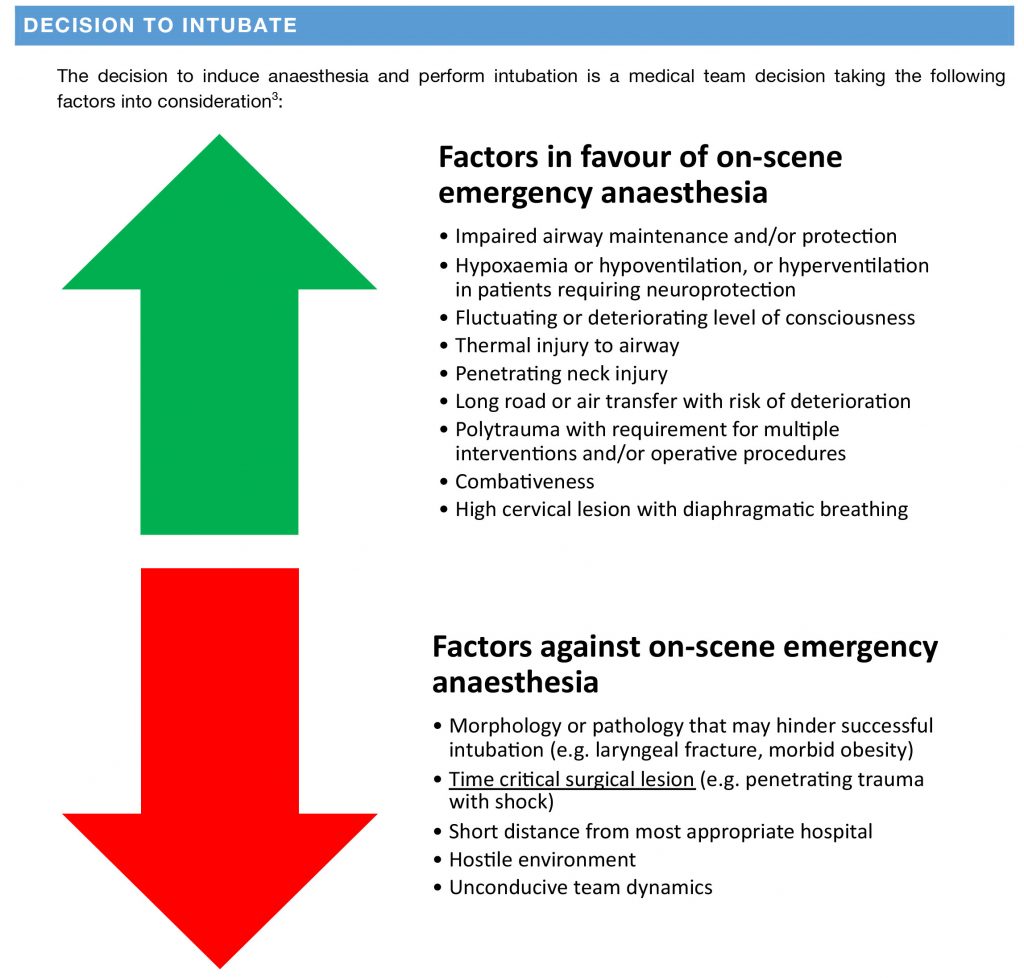
Updates on rapid sequence intubation from Australian HEMS
Advanced airway management is a fundamental component of advanced pre-hospital care. What are the main factors for the decision of performing intubation?
Rapid Sequence Intubation is a method of controlling airways and minimizing the risk of vomits and fluids regurgitation born in 1970 (Stept | Safar) applying the Cricoid Pressure during the Airway management procedures (Sellick). Rapid Sequence Intubation is one of the most important manoeuvres in the ALS because it must preserve the airway efficiency. It is the essential component of the medical technical skills, for operating in a pre-hospital emergency. But since 2010, there are questions about Sellick Manoeuvre that researchers are investigating.
 The Greater Sydney Area HEMS is one of the most skilled teams about pre-hospital ALS procedures in the world. They are following #FOAMED protocols to provide everyone with information about their experiences, especially about Airway Management. They had created the Airway Registry that is an important benchmark to learn a better practice. All the cases registered in the Airway Registry are discussed non-contemporaneously, anonymised and amalgamated over a time period to draw together unifying take-home messages.
The Greater Sydney Area HEMS is one of the most skilled teams about pre-hospital ALS procedures in the world. They are following #FOAMED protocols to provide everyone with information about their experiences, especially about Airway Management. They had created the Airway Registry that is an important benchmark to learn a better practice. All the cases registered in the Airway Registry are discussed non-contemporaneously, anonymised and amalgamated over a time period to draw together unifying take-home messages.
The Greater Sydney Area HEMS in 2010 created a Rapid Sequence Intubation manual. This manual describes a system for pre-hospital emergency anaesthesia. It is a really interesting book for professionals that are operating in skill-limited settings where retrieval team equipment and expertise may be required to provide the safest and most expedient advanced airway management.
The Greater Sydney Area HEMS manual describes procedures to be followed for pre-hospital emergency anaesthesia. The Australian idea is to support the pre-planned laryngoscopy strategy for first look success. “This avoids prolonged and multiple attempts and consequent complications. It aims to ensure a safe standardised technique for pre-hospital emergency anaesthesia while acknowledging the varied circumstances, environments and pathologies encountered in the pre-hospital setting. The advice given is derived from the combined experience of a large range of clinicians in pre-hospital trauma care and is evidence-based where possible. The manual outlines the key theoretical and practical competencies which are assessed in the Emergency Anaesthesia Clinical Currency”.  As with all procedures, the decision to proceed with pre-hospital emergency anaesthesia must be based on an informed assessment of the risk of the procedure versus the clinical benefits. The indications for pre-hospital emergency anaesthesia are:
As with all procedures, the decision to proceed with pre-hospital emergency anaesthesia must be based on an informed assessment of the risk of the procedure versus the clinical benefits. The indications for pre-hospital emergency anaesthesia are:
- Failure of airway patency
- Failure of airway protection
- Failure of ventilation/oxygenation
- Anticipated clinical course
- Humanitarian reasons
- To facilitate safe transportation
Advanced airway management, including emergency anaesthesia, is a fundamental component of advanced pre-hospital care. Securing airway patency and protection is an essential skill in caring for the multiply injured patient. It maximises oxygenation of critically injured patients, enables their safe transport to a hospital, facilitates neuroprotection as well as rapid in-hospital investigation and surgical care.
The extra time spent on scene securing an airway (even by skilled clinicians) is one of the greatest controversies in pre-hospital care. The time spent managing the airway is offset by the time saved during the transport and in-hospital phases of resuscitation as long as it is performed safely and expeditiously. Pre-hospital emergency anaesthesia scene times of less than 20min are achievable and should be the target during training.
Pre-hospital emergency anaesthesia is potentially riskier than in-hospital general anaesthesia because of the challenges presented by the pre-hospital environment and therefore every effort must be made to ensure the safety of the procedure. In aviation and military settings it is well accepted, that the higher the acuity of the situation, the greater the need to remove individual procedural preference and the greater the need to adhere to a standard operating procedure.
The decision of intubation: the consideration list from Sydney HEMS
 DOWNLOAD AND READ THE MANUAL HERE
DOWNLOAD AND READ THE MANUAL HERE


